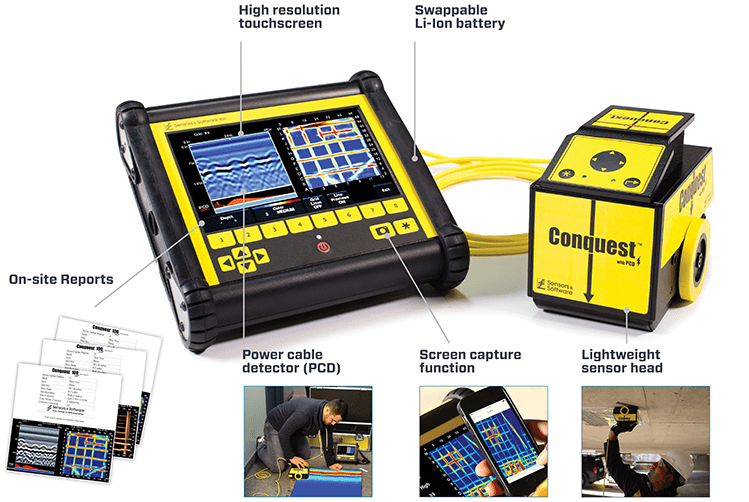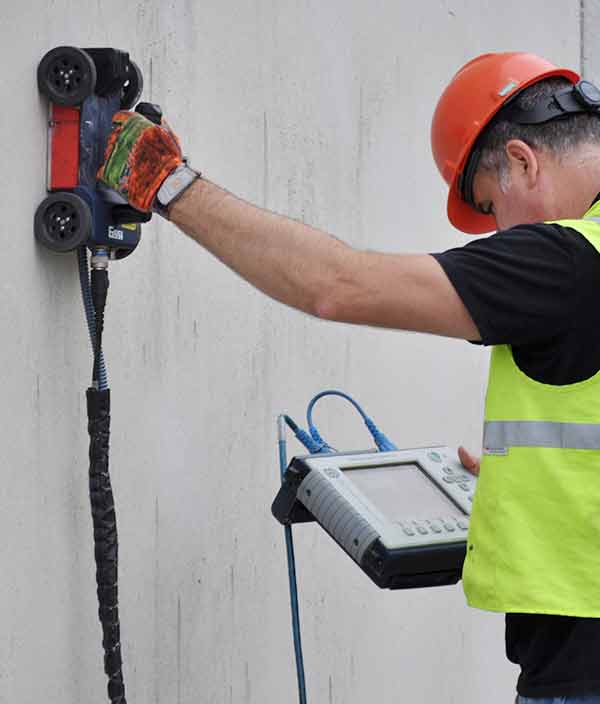Enhancing Task Preparation and Execution With Advanced Concrete Scanning Strategies
In the realm of task planning and insight, precision and implementation are important components that can make the difference in between success and problems. Advanced concrete scanning strategies have arised as a sophisticated device set to boost the standards of task management within the building and construction industry.
Benefits of Advanced Concrete Scanning Strategies

Improved Accuracy in Project Assessments
Enhancing project assessments through advanced concrete scanning techniques considerably increases the precision and reliability of construction evaluations. By employing cutting-edge scanning technologies such as ground-penetrating radar (GPR) and 3D imaging, task groups can currently acquire comprehensive insights into the problem of concrete frameworks, determining prospective imperfections or weaknesses that may not be visible to the naked eye. This boosted degree of accuracy in project assessments makes it possible for building and construction experts to make more informed choices relating to repair work and maintenance approaches, causing enhanced overall project results.
Moreover, the raised precision in project analyses accomplished through innovative concrete scanning methods helps in decreasing the danger of unforeseen concerns during the construction stage. By proactively identifying concealed anomalies within concrete frameworks, such as rebar corrosion or spaces, project groups can address these concerns early, avoiding expensive hold-ups and remodel later on in the project lifecycle. Inevitably, the improved precision in task evaluations promoted by advanced concrete scanning strategies adds to higher performance, cost-effectiveness, and high quality in building and construction projects.
Very Early Recognition of Structural Difficulties
Very early detection of structural difficulties plays an important duty in ensuring the stability and safety and security of concrete structures throughout the building process. Recognizing potential problems at an onset allows for timely treatment, protecting against costly rework, routine hold-ups, and safety and security hazards. Advanced concrete scanning techniques, such as ground-penetrating radar (GPR) and 3D imaging, allow task groups to reveal hidden problems, spaces, support format discrepancies, and other anomalies that might jeopardize the framework's security.
By implementing these techniques during the planning and execution phases, building experts can proactively attend to architectural obstacles prior to they rise right into significant troubles. For circumstances, spotting insufficient concrete cover over reinforcement bars at an early stage can stop rust and architectural weakening over time - RainierGPR Service Areas. Additionally, determining variations in concrete density or thickness can aid maximize product use and make sure uniform strength homes across the structure

Eventually, early recognition of architectural difficulties with advanced concrete scanning not only boosts the total high quality and toughness of the building however also adds to a more secure constructed environment for individuals and passengers.
Enhanced Precaution in Construction
The execution of durable safety and security methods is imperative in the building market to minimize threats and guard the health of employees and stakeholders. To enhance safety measures, building and construction firms are significantly embracing technological advancements such as wearable devices that check employees' essential indicators and spot potential health and wellness concerns in real-time. By focusing on safety through the incorporation of innovative innovations and extensive training programs, building and i thought about this construction jobs can substantially lower crashes and develop a safe functioning atmosphere for all included.
Streamlining Task Monitoring Processes
To enhance operational efficiency and make certain task success in the building sector, a focus on improving project management processes is necessary. By executing reliable job management processes, construction jobs can minimize hold-ups, reduce expenses, and boost overall performance. One key element of streamlining job monitoring is making use of innovative technologies such as Structure Details Modeling (BIM) software, which allows real-time collaboration, clash detection, and precise task scheduling. Furthermore, the fostering of cloud-based task management systems permits seamless communication amongst group participants, instant access to task information, and the ability to track development in additional resources real-time.

Final Thought
In final thought, the application of innovative concrete scanning techniques provides various benefits for job planning and execution. These methods supply enhanced precision in job analyses, very early recognition of architectural challenges, enhanced safety measures in construction, and streamlined task monitoring procedures. Including these approaches right into job process can eventually cause a lot more effective and successful outcomes in building and construction projects.
Ultimately, the improved precision in job assessments facilitated by advanced concrete scanning strategies adds to greater efficiency, cost-effectiveness, and top quality in building projects. RainierGPR Service Areas.
To maximize operational efficiency and make certain task success in the building sector, an emphasis on improving job management processes is important. By implementing effective project administration procedures, construction tasks can minimize delays, minimize costs, and boost overall performance. By enhancing job management procedures with technology combination, clear communication, and data-driven methods, construction tasks can achieve higher efficiency, cost-effectiveness, and successful end results.
These techniques give improved precision in find here task evaluations, very early identification of structural obstacles, enhanced security actions in construction, and structured task management processes.